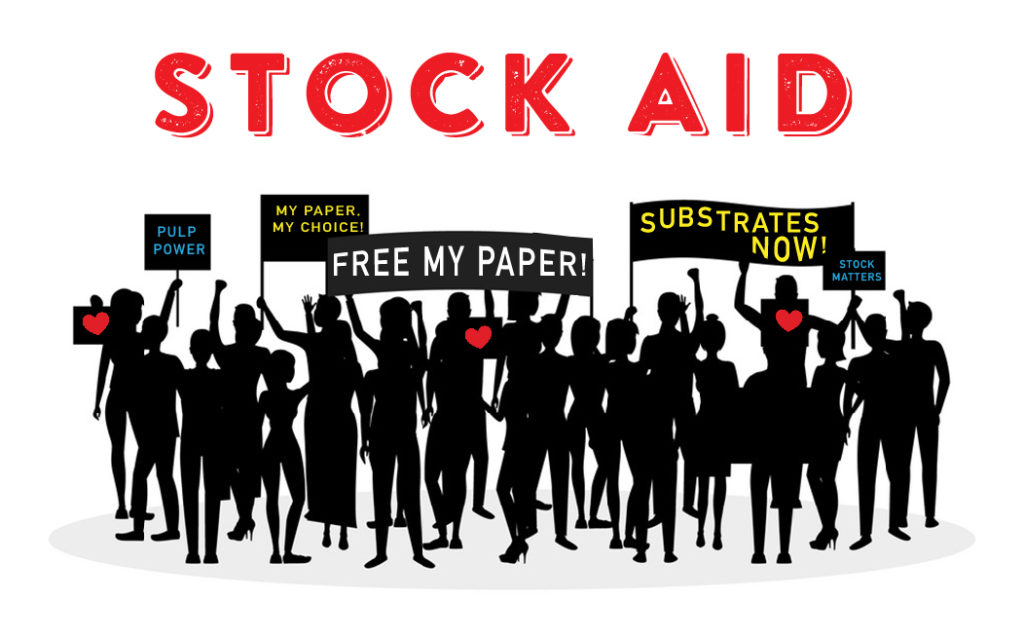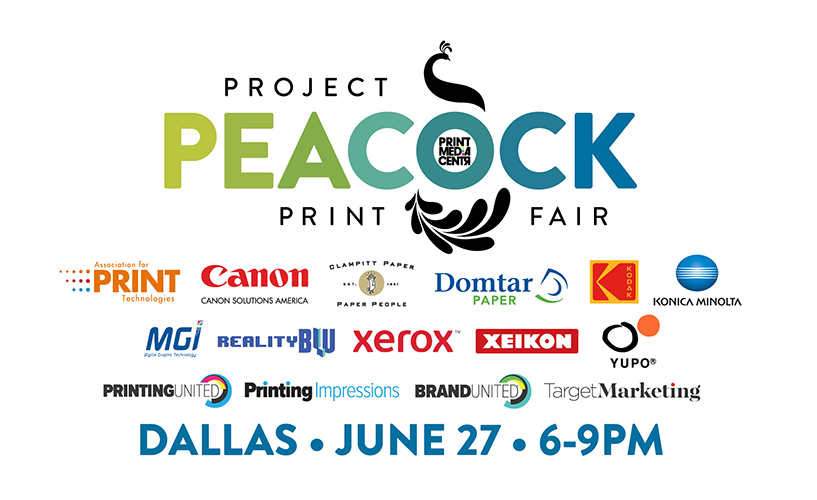I AM MAD AS HELL AND I CANNOT TAKE IT ANYMORE.. and I am not alone!
At a recent event I attended, a panel represented by 5 paper mills and 1 merchant heard from a vocal crowd of printers who were less than thrilled with the current state of the paper supply chain.

I am defining the paper supply chain like this: Mill to Merchant to Printer to Print Customer and Print Customer as a professional buyer; someone who has chosen a specific paper, from a specific mill, with a specific weight and finish for their project and included it in their estimate request. I am defining specialty paper and substrates as this: the fun and funky stuff, and anything being labeled as specific for inkjet or digital print, or that you would want to test it before you used it. I know it’s a broad definition, please indulge me.
Putting the actual paper supply/shortage issue to the side since there is nothing we can do about that in this post, I want to recap three of the discussion points raised during this panel we MUST do something about, right now.
Paper Testing.
It seems there is an issue when it comes to PSP’s testing paper on new technology purchases. Printers are being told they are required to purchase a significant amount of paper to do product testing. The amounts varied, but they were all ridiculous. It was evident by the shocked faces of the paper industry panelists. If it hasn’t happened to you, great. But it has happened to several printers who shared their story in this session, which means it is happening, so let’s not start off by denying it.
Paper Picking.
This has always been a pet peeve that has now bloomed to full-blown anger thanks to some very honest and equally miffed printers attending this panel discussion. The situation is as such… a cool new paper/substrate is promoted to print customers. Print customers spec the paper for their project. Printers switch the paper out anticipating it will be too expensive or tell customers they can’t use it. Until this session I had always believed printers were the sole culprits here but I was very wrong, it’s a team effort. It seems that the smaller digital print quantities for “specialty” papers aren’t always available for purchase with some mills and merchants. One printer in the room shared that he does NOT show customers colored paper or heavier stocks as options to avoid minimum quantity issues before they happen.
Paper Promotions.
This gets filed under, really? How is it that PRINTERS aren’t getting the paper promotions meticulously created and produced by the mills? If you get them, great… but not ONE hand went up when the 40 or so PSP attendees of this session were asked if they received them, and the question was asked twice at two different points in time… the second time by a mill representative in the audience to specifically make sure the question was understood. It was. Printers cannot advise their customers and make decisions about what they can or can’t offer without knowing what is out there. Does this really need to be said? Mills, this is on you now. Help the Printers get your swatch books and promotions – please!
PAPER PEOPLE – PLEASE STOP THIS MADNESS!
Assuming our collective goal is to make it as easy as possible for buyers to purchase print and use their paper or substrate of choice on their technology of choice, we need to fix this system.
We cannot force printers to buy a semi-truck worth of specialty paper to test their new presses. Manufacturers if you aren’t involved in helping here, please consider stepping in to help your customers. You are marketing and selling presses based on the paper and substrates they can use as a differentiation, help the printers and print customers use it. Help your PSP customers affordably secure paper to test their presses so they can be confident selling printing from them. If you do this already PLEASE leave a comment and let everyone know.
We cannot tell ad agencies and brands that we are all about helping them achieve 1:1 marketing success through digital printing but only if they use a minimum quantity of specialty paper or revert to “standard” stocks. They want to use premium paper, they want to stand out, they don’t want to work with people who say no.
We need to have an honest and open dialog about Paper Merchants. If I drew this post as a diagram, many lines would be pointing in that direction. I am not saying Merchants are bad, I am saying we have a big picture industry problem that involves them, and we need to address it. There is a lot of paper supply chain power and control in one place and it isn’t working out for everyone. I’ve been told that some printers have bought paper converting machines to buy directly from Mills and make their own sheets to avoid Merchants and minimum quantities… in-house paper supply vs outsourced. That may not be an option for everyone or the best solution, but it has been working for bringing finishing services in-house, and this is that model. If the current marketplace is no longer being fully-served by this historical paper distribution system then disruption is warranted. 
Paper, Substrates and Project Peacock
Whether it was in a conference room, a classroom or an event space, more than 1000 print customers (to date) from brands and agencies who we presented to had 2 things in common… they all love paper and substrates, and they all wanted to see new paper and substrate options …and use them as they wish. How much more of a focus group consensus is required before we help make this a reality?
Project Peacock Print Fair is coming to Dallas on June 27th with Domtar Paper, Yupo and hometown favorite Clampitt Paper amongst our partners. If you are a Mill or a Merchant who is eager and able to HELP print customers use your paper and substrates, please get in touch with me and join us for Project Peacock Print Fair Chicago on August 1, Los Angeles on September 12.. and due to overwhelming demand, Toronto on November 7th has been added to our 2019 schedule.
And finally…
Paper is the literal foundation of our work. The next time you are complaining about digital media vs print media, shrinking print volumes and commodity price wars, don’t forget to factor in some of this as the cause. Are you mad as hell? I hope so.
 Deborah Corn is the Intergalactic Ambassador to The Printerverse™ at Print Media Centr, a Print Buyerologist™, industry speaker and blogger, host of Podcasts from The Printerverse, cultivator of Print Production Professionals the #1 print group on LinkedIn, Head Girl in Charge (H.G.I.C.) at GirlsWhoPrint, host of #PrintChat every Wednesday at 4PM ET on Twitter, the founder of International Print Day and the founder of #ProjectPeacock. She is the recipient of several industry honors including the 2016 Girls Who Print Girlie Award and sits on the boards of the Advertising Production Club of NYC and The Magazine Innovation Center at the University of Mississippi.
Deborah Corn is the Intergalactic Ambassador to The Printerverse™ at Print Media Centr, a Print Buyerologist™, industry speaker and blogger, host of Podcasts from The Printerverse, cultivator of Print Production Professionals the #1 print group on LinkedIn, Head Girl in Charge (H.G.I.C.) at GirlsWhoPrint, host of #PrintChat every Wednesday at 4PM ET on Twitter, the founder of International Print Day and the founder of #ProjectPeacock. She is the recipient of several industry honors including the 2016 Girls Who Print Girlie Award and sits on the boards of the Advertising Production Club of NYC and The Magazine Innovation Center at the University of Mississippi.
Deborah has 25+ years of experience working in advertising as a Print Producer. She currently provides printspiration and resources to print and marketing professionals through PMC, and works behind the scenes with printers, suppliers and industry organizations helping them create meaningful relationships with customers, and achieve success with their social media and content marketing endeavors.
Explore Podcasts From The Printerverse
Connect with Deborah: Twitter / Facebook / LinkedIn / Instagram / YouTube / Pinterest / Print Production Professionals Group / deborah@printmediacentr.com
Please subscribe to PMC’s News from The Printerverse for PRINTSPIRATION delivered to your inbox 1x a month.
Calling all Girls Who Print!! The Women’s Print Mentoring Network is open, FREE, and ready to match mentors and mentees. Sign up today!












7 Responses
Great post, Deborah! I have been frustrated by this for years! Paper companies, as we know, are bought, sold and merged as investments. Mills are at the mercy of raw materials and market demand. You don’t fire up or shutter a mill over night, so the mills are always lagging in response to market triggers. This is a long way to set the stage for something that happened in the early 2000s. Many paper merchants who catered to small printers – under $30 million a year – closed their walk-in and delivery businesses. They moved business to online or to their parent company, which often had minimum orders that made it prohibitive for printers to buy and try new stocks. Some printers, as you mentioned, bought and stored parent sheets and even resold them. However, during the recessions of 2003 and 2008, those printers shrunk their paper inventory to make room for higher priced products — or to save money. Small printers started buying paper at the big box stores to try to get the quantities they needed, which pinched the retail merchants. The whole thing spiraled to the point that a small printer could not view, touch or try new paper options. Print buyers had to call all over town to see who was printing with certain stocks if they wanted something special — or printers would call around to borrow or buy from other printers. As you note, that meant they hadn’t even tried the paper on their machines yet. Meanwhile, large merchants started selling other products — their own and that of partners — which pinched the capacity in their warehouses to store large machines (like digital presses, shrink wrap machines, digital finishing equipment, etc.) and other non-paper inventory. I would love to see this issue addressed by the mills and merchants and give small printers access to the materials they need to be successful. Thank you for writing about this! — Sandy Hubbard
Great added value info Sandy.. THANK YOU!!!!
Great post Deborah!
This is great! I don’t know what can be done to change the economic situation that has developed over the years, as Sandy points out.
While we can usually obtain specialty papers, the minimum order & pricing often prohibits clients from choosing a cool sheet that’s over their budget. And budgets are getting squeezed all the time, especially in the non-profit space.
I do hesitate showing “fancy” papers, for fear of setting up disappointment once we check into availability and pricing.
I might chime in here that it could be possible to look into manufacturers such as my company, Papercone Corp. Not trying to use this as a plug, but it could help bridge the gap for printers needing to offer some variety of substrates. Finding a larger company that has more buying power and familiarizing yourself with what they offer can give you some options right now. We are not all things to everyone, but have a large variety of substrates, sizes, etc and can do custom for our distributors. Using companies like mine for orders and stock options right now could help save some of your orders and help to capture more. We have had huge increases also. But, margin to margin it could be an added value option. If I can help or if I can help you find something we do not work in, let me know. These truly are volatile pricing times such as we have never seen. I have already lost too many friends in the industry. We do need to help each other. Any suggestions to me on what else I can do to help, please let me know. Great article Deborah.
Once upon a time I garnered the nickname Pulphead because I was a paper fanatic. I was lucky enough to be a Print Producer at a smaller, award winning agency in the Dallas market during the mid 80s to the mid 90s. Spec reps lined up outside my office to show me the latest and the greatest in the specialty papers arena. Most had exclusives with certain brands, such as the ever appealing French Paper. I still have containers full of glorious print samples. Some produced by me and some that were samples from the mills of the glorious work for which their substrates could make an impact. But alas, gone are those days of Annual Report season and the adrenaline rush of all night press checks.
Here we are in 2021 where Monadnock is one of the last great mills still standing. Print jobs are specked by paper weight and coated or uncoated.
The dilution of paper choices is but yet one more example of the elimination of craftsmanship in the art of printing.
I’m not throwing in the towel. I will continue to seek out print projects that involve special treatments. If all we are left with is embossing and foil stamping, then so be it; I’m still in it to print it.
HI Deborah – we do substantial testing with the OEM’s on our synthetic papers, we are doing so right now with our new Water-based inkjet range – we also have our own laser printers at our factory to test ourselves. We are the most OEM certified synthetic supplier in the world – we are only small but global and take our testing seriously.